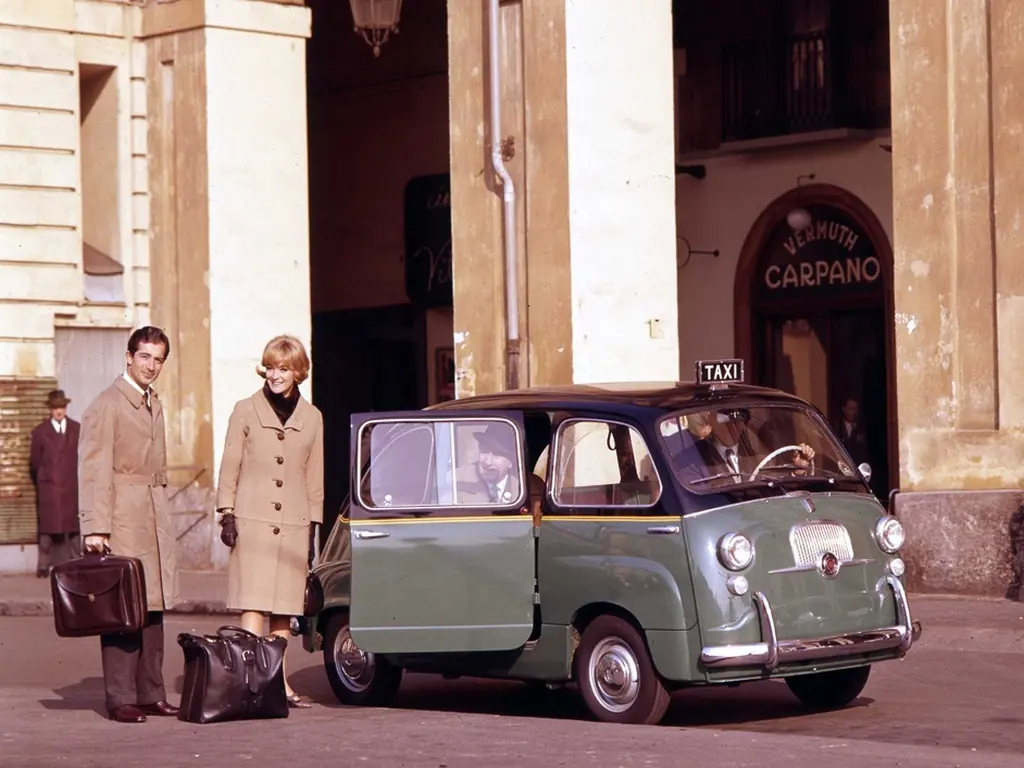MEMORIES OF THE FIAT 600 MULTIPLA
23 February 2023
There are some cars you will never forget. Nearly 20 years ago, I took to the wheel a Fiat 600 Multipla, a pioneer people carrier and a vehicle with quite industrial levels of charisma. Opening the back-hinged front door revealed a fascia best described as “ultra-minimalist” and a driving position that was slightly challenging. At least the steering column was universally jointed for ease of access, and the front seat backrest had a limited range of adjustment of three positions to compensate for the fixed cushion.
Starting the engine meant pulling on a floor-mounted lever, and although Fiat helpfully provided a hand throttle, I did not dare use it. Meanwhile, the headlamp bowl by my left kneecap was a reminder that there was only an inch of steel between me and the outside world. The clutch and brake pedals on either side of the steering column seemed Lilliputian beneath a Size 12 foot, but the drums were highly efficient, and the four-speed transmission a delight.

Above all, the Multipla was quite incredible fun. The speedometer was only marked up to 110 kph on the LHD models, and the top speed was just 59 mph. Yet, the Fiat appeared capable of Ferrari-like acceleration. After just ten minutes, the damp grey British weather miraculously dissipated, for I was now Vittorio Gassman or Alberto Sordi in a late 1950s Technicolor comedy about a Rome cabbie.
In short, I was reluctant to return the Multipla to its owner, for this incredible machine genuinely beguiled me. Its narrative began in 1953, two years before the launch of the 600 saloon. Fiat’s Director of Engineering, Dante Giacosa, worked with the criteria of using as little steel as possible and a rear engine layout that ruled out a tailgate. Instead, wide-opening side doors would hopefully appeal to small traders and business owners.
The bodywork was ten inches longer and around eight inches taller than 600, reflecting a time when most middle-class Italian men wore hats. The Multipla debuted at the 1956 Brussels Motor Show. Buyers could order a four-seater, with front and middle benches that could form a double bed or a six-seater with two rows of folding individual seats.
With both set-ups, the owner could fold the back seats flat, resulting in 19 cubic feet of luggage space. Fiat also built a ‘Taxi’ version with a division and a luggage platform alongside the driver’s seat. In 1960 the Multipla gained the 600D’s 767cc engine. Production ended in 1966 after around 150,000 units, while the black and green taxis could be seen plying for hire well into the following decade.
Surprisingly, SEAT did not build a Spanish-market Multipla, for it seemed ideal for the streets of Madrid or Barcelona. However, Fiat GB did sell an RHD model, which Autocar liked; their 1957 test suggested it might become one of the family. However, they also noted the heavy import duties and at £799 7s, the Multipla cost as much as a Hillman Minx.
Somewhat inevitably, the Fiat was too expensive and too unconventional for the average British motorist; you can imagine the inhabitants of 23 Railway Cuttings, East Cheam uttering “stone me!” at its very appearance. Consequently, less than 100 examples found homes in this country, and the Multipla’s most high-profile role was Tom Sylvester’s fleet of 25 minicabs in 1961 - Look Out Taxis ! (1961) - YouTube
To summarise my feelings about this incredible Fiat, here are experiences of travelling as a passenger in a privately imported taxi:
“All the while the engine continually buzzes and stirs, reminding you that the Multipla is not a car for driving in an aloof manner – all occupants inevitably become involved in the Fiat’s progress. As Kent speeds by and various Mondeo owners’ mouth ‘What the naughty word is that?’ the speedometer needle dances optimistically around the dial and various 1950s sci-fi style tell-tales on the dashboard flash in accompaniment. There really is never a dull moment in the original Multipla.”
Who could possibly demand more from a car?
